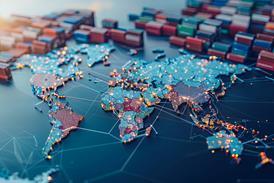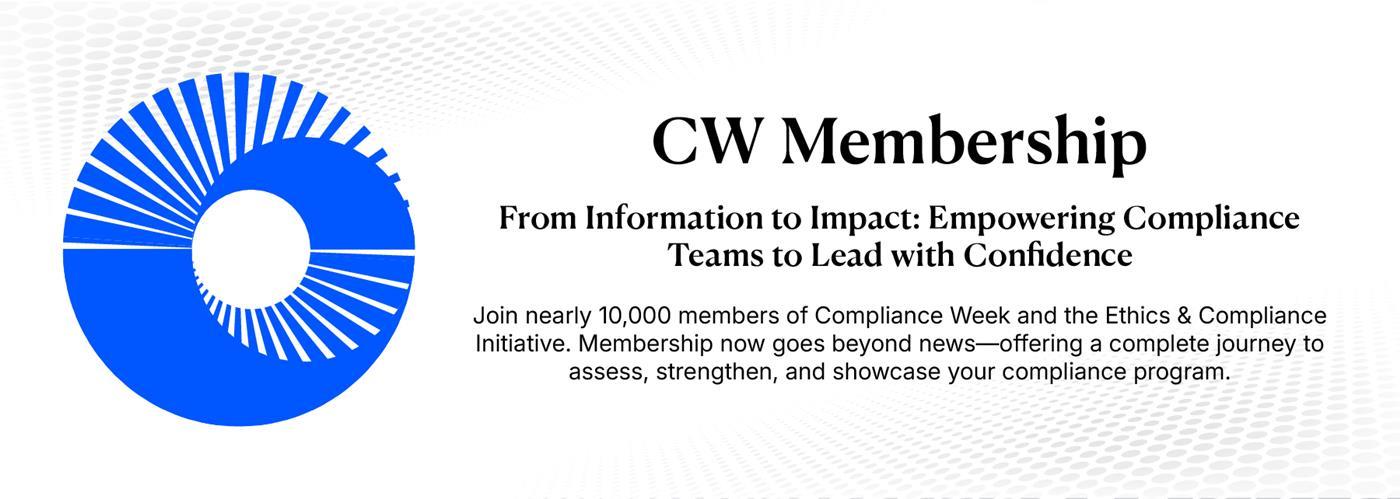- Home
-
News
- Back to parent navigation item
- News
- National Compliance Officer Day 2025
- Accounting & Auditing
- AI
- AML
- Anti-Bribery
- Best Practices
- Boards & Shareholders
- Cryptocurrency and Digital Assets
- Culture
- ESG/Social Responsibility
- Ethics & Culture
- Europe
- Financial Services
- Internal Controls
- Regulatory Enforcement
- Regulatory Policy
- Risk Management
- Sanctions
- Surveys & Benchmarking
- Supply Chain
- Third Party Risk
- Whistleblowers
- Opinion
- Benchmarking
- Certification
- Events
- Research
- Awards
-
CW Connect
- Back to parent navigation item
- CW Connect
- Sign In
- Apply
- Membership
Top 10 supply chain risks for 2019
By  Jaclyn Jaeger2019-05-06T17:57:00
Jaclyn Jaeger2019-05-06T17:57:00

Natural disasters, droughts, port disruptions, cargo theft, and industrial fires are some of the top supply-chain risks that should keep executives and chief risk officers on their toes in 2019, according to a new risk report published by DHL Resilience360.
The report, based on risk and incident data collected by DHL’s cloud-based risk management provider Resilience360, presents a global overview of major events that disrupted supply chains in 2018 across five key regions: North America, Europe, Latin America and the Caribbean, Africa and the Middle East, and Asia Pacific.
The report further provides a list of the top 10 supply chain risks to watch in 2019. According to Resilience360, those top 10 supply-chain risks are:
THIS IS MEMBERS-ONLY CONTENT
You are not logged in and do not have access to members-only content.
If you are already a registered user or a member, SIGN IN now.
Related articles
-
 Article
ArticleVolvo becomes latest to join Responsible Sourcing Blockchain Network
2019-11-06T17:51:00Z By Jaclyn Jaeger
The Responsible Sourcing Blockchain Network announced its digital supply chain for cobalt has moved beyond pilot phase and is progressing toward use in live production computing environments from spring 2020, just as Volvo joins as its newest member.
-
 Opinion
OpinionHow to identify and mitigate risks posed by Foreign Terrorist Organizations
2025-12-24T18:55:00Z By Michael K. Atkinson and Caroline E. Brown, CW guest columnists
Since Inauguration Day on Jan. 20, 2025, the Trump Administration has made it a priority to expand the list of designated Foreign Terrorist Organizations.
-
 Webcast
WebcastCPE Webcast: Hot Topics in Risk and Compliance: AI, Analytics, and Emerging Audit Technologies
2025-12-16T14:00:00Z Provided by Workiva
Join experts from KPMG, Cisco, and Workiva as they explore how audit, accounting, and finance professionals can leverage a technology mix of data analytics, gen AI, and other tools to ramp up efficiency and strengthen control effectiveness.
More from Risk Management
-
 Article
ArticleRapid regulatory change requires investment in compliance processes in financial services firms
2025-11-20T21:55:00Z By Ruth Prickett
Geopolitical instability and a general focus on increasing growth and productivity by governments worldwide are causing a slew of regulatory changes in the financial services sector. But most firms are failing to identify potential compliance changes early enough to make meaningful decisions.
-
 Article
ArticleCompliance should protect firms from AI-washing investigations and insurance claims
2025-11-05T20:28:00Z By Ruth Prickett
Insurance firms are warning that AI-washing could trigger a slew of cases against directors, and are adjusting their directors’ and officers’ liability premiums accordingly. With regulators cracking down on AI-washing, compliance could be a crucial line of defense and save companies on their insurance costs.
-
 News Brief
News BriefAI hallucinations in Deloitte Australia report highlight important role for compliance
2025-10-24T18:57:00Z By Ruth Prickett
“Hallucinatory” citations and errors in an AI-assisted report produced by Deloitte for the Australian government should be a wake-up call for compliance officers about the risks of placing too much trust in AI.
- Terms and Conditions
- Privacy Policy
- Do Not Sell My Info
- © 2025 Compliance Week
Site powered by Webvision Cloud






